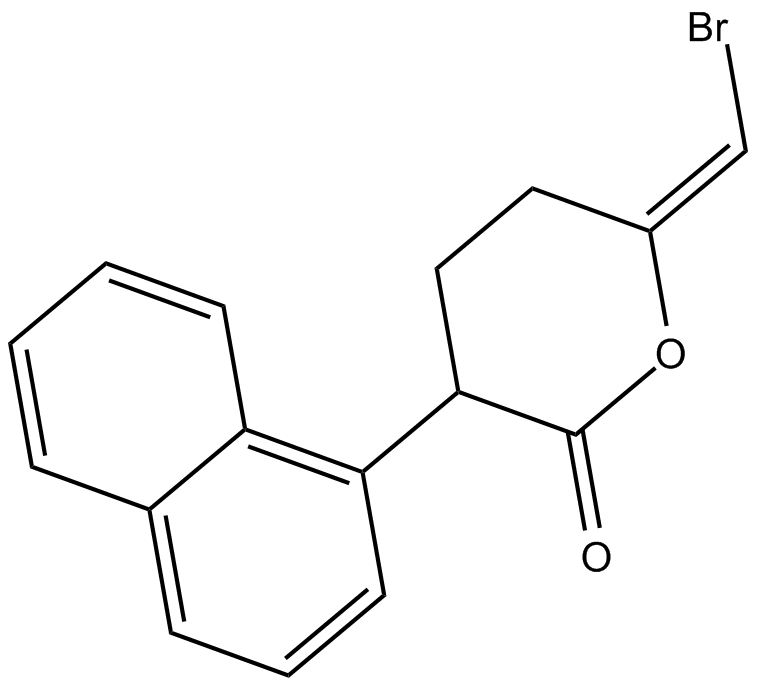Bromoenol lactone (Synonyms: BEL, Haloenol lactone, HELSS) |
| Catalog No.GC11021 |
Inhibitor of myocardial cytosolic calcium-independent phospholipase A2 (iPLA2)
Products are for research use only. Not for human use. We do not sell to patients.

Cas No.: 88070-98-8
Sample solution is provided at 25 µL, 10mM.
Bromoenol lactone is a potent and irreversible inhibitor of myocardial cytosolic calcium-independent phospholipase A2 (iPLA2) [1].
The iPLA2 has been involved in stimulus-induced arachidonic acid release and lysophospholipid generation. The catalytic action of iPLA2 is responsible for phospholipid remodeling as a housekeeping function. Arachidonic acid and lysophospholipid generated by iPLA2 act as a signaling molecule in cellular functions, including eicosanoid production, glucose-induced insulin secretion, Fas-induced apoptosis, cellular proliferation, membrane traffic in fusion, contribution to myocardial ischemia, and others [2].
BEL promoted apoptosis in a variety of cell lines, including U937, THP-1, and MonoMac (human phagocyte), RAW264.7 (murine macrophage), Jurkat (human T lymphocyte), and GH3 (human pituitary). Long term treatment with BEL (up to 24 h) increased annexin-V binding to the cell surface and nuclear DNA damage. BEL induced the proteolysis of procaspase-9 and procaspase-3 and increased cleavage of poly (ADP-ribose) polymerase [1]. BEL inhibited cellular phosphatidic acid phosphohydrolase (PAP) activity in intact P388D1 macrophages with an IC50 of ~8 μM. BEL blocked triacylglycerol biosynthesis in P388D1 cells by decreasing diacylglycerol availability [3].
References:
[1] Fuentes L, Pérez R, Nieto M L, et al. Bromoenol lactone promotes cell death by a mechanism involving phosphatidate phosphohydrolase-1 rather than calcium-independent phospholipase A2[J]. Journal of Biological Chemistry, 2003, 278(45): 44683-44690.
[2] Akiba S, Sato T. Cellular function of calcium-independent phospholipase A2[J]. Biological and Pharmaceutical Bulletin, 2004, 27(8): 1174-1178.
[3] Balsinde J, Dennis E A. Bromoenol lactone inhibits magnesium-dependent phosphatidate phosphohydrolase and blocks triacylglycerol biosynthesis in mouse P388D1 macrophages[J]. Journal of Biological Chemistry, 1996, 271(50): 31937-31941.
Average Rating: 5 (Based on Reviews and 2 reference(s) in Google Scholar.)
GLPBIO products are for RESEARCH USE ONLY. Please make sure your review or question is research based.
Required fields are marked with *




